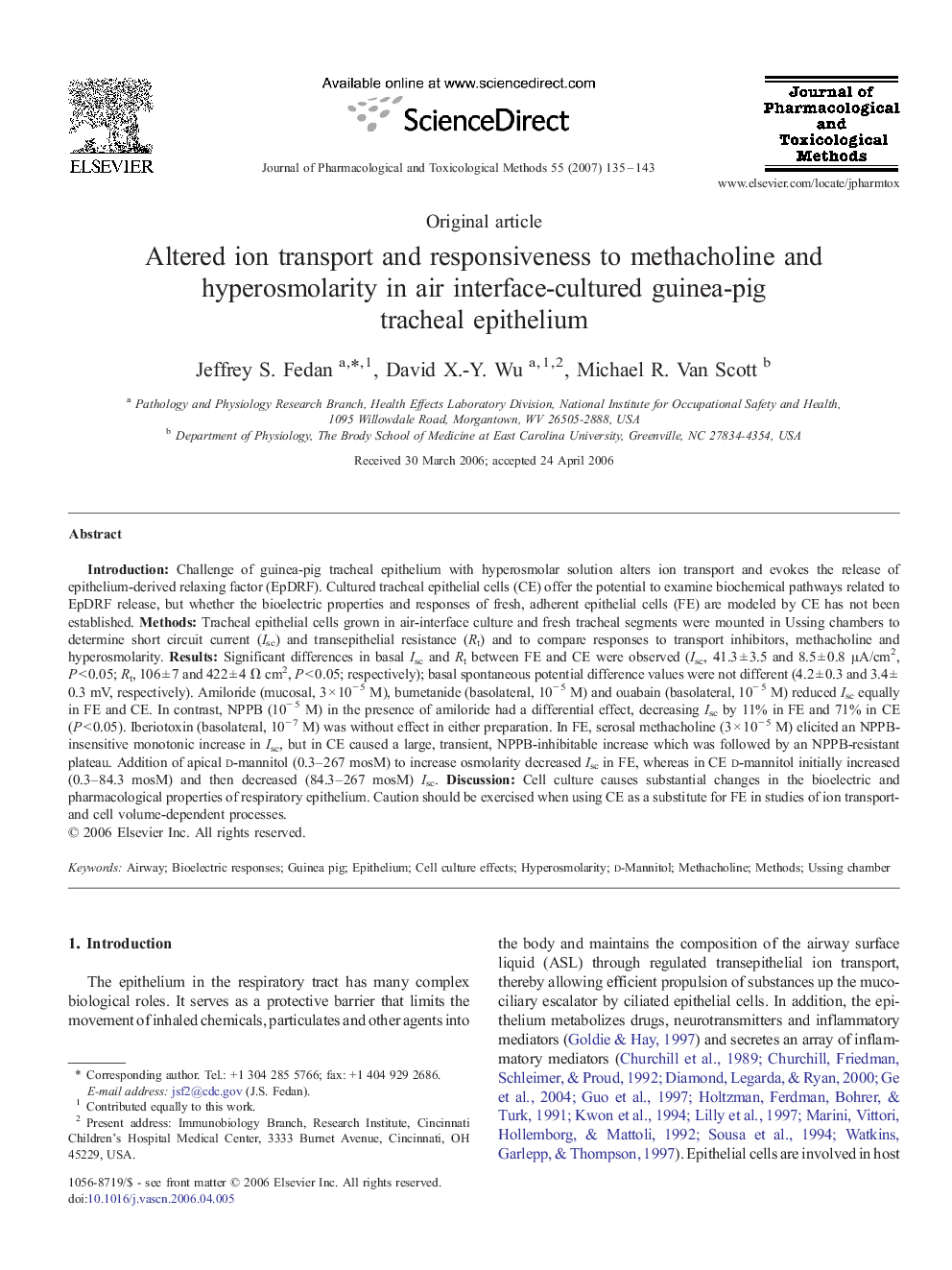| کد مقاله | کد نشریه | سال انتشار | مقاله انگلیسی | نسخه تمام متن |
|---|---|---|---|---|
| 2549681 | 1124522 | 2007 | 9 صفحه PDF | دانلود رایگان |

Introduction:Challenge of guinea-pig tracheal epithelium with hyperosmolar solution alters ion transport and evokes the release of epithelium-derived relaxing factor (EpDRF). Cultured tracheal epithelial cells (CE) offer the potential to examine biochemical pathways related to EpDRF release, but whether the bioelectric properties and responses of fresh, adherent epithelial cells (FE) are modeled by CE has not been established. Methods: Tracheal epithelial cells grown in air-interface culture and fresh tracheal segments were mounted in Ussing chambers to determine short circuit current (Isc) and transepithelial resistance (Rt) and to compare responses to transport inhibitors, methacholine and hyperosmolarity. Results: Significant differences in basal Isc and Rt between FE and CE were observed (Isc, 41.3 ± 3.5 and 8.5 ± 0.8 μA/cm2, P < 0.05; Rt, 106 ± 7 and 422 ± 4 Ω cm2, P < 0.05; respectively); basal spontaneous potential difference values were not different (4.2 ± 0.3 and 3.4 ± 0.3 mV, respectively). Amiloride (mucosal, 3 × 10− 5 M), bumetanide (basolateral, 10− 5 M) and ouabain (basolateral, 10− 5 M) reduced Isc equally in FE and CE. In contrast, NPPB (10− 5 M) in the presence of amiloride had a differential effect, decreasing Isc by 11% in FE and 71% in CE (P < 0.05). Iberiotoxin (basolateral, 10− 7 M) was without effect in either preparation. In FE, serosal methacholine (3 × 10− 5 M) elicited an NPPB-insensitive monotonic increase in Isc, but in CE caused a large, transient, NPPB-inhibitable increase which was followed by an NPPB-resistant plateau. Addition of apical d-mannitol (0.3–267 mosM) to increase osmolarity decreased Isc in FE, whereas in CE d-mannitol initially increased (0.3–84.3 mosM) and then decreased (84.3–267 mosM) Isc. Discussion: Cell culture causes substantial changes in the bioelectric and pharmacological properties of respiratory epithelium. Caution should be exercised when using CE as a substitute for FE in studies of ion transport- and cell volume-dependent processes.
Journal: Journal of Pharmacological and Toxicological Methods - Volume 55, Issue 2, March–April 2007, Pages 135–143